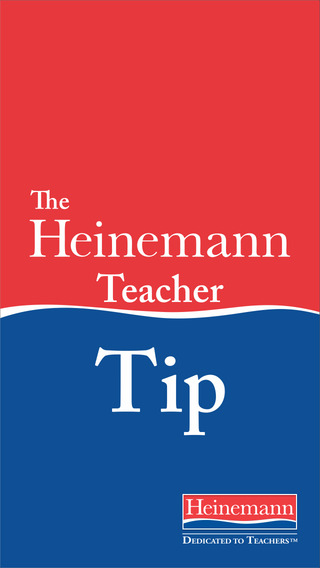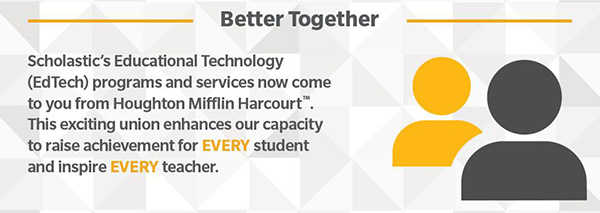| |
Promoting Access and Equity in Mathematics
By Matt Larson–NCTM President-Elect; Houghton Mifflin Harcourt Math Author

In Principles to Actions: Ensuring Mathematical Success for All, the National Council of Teachers of Mathematics [NCTM] argues in the Access and Equity Principle that
An excellent mathematics program requires that all students have access to high-quality mathematics curriculum, effective teaching and learning, high expectations, and the support and resources needed to maximize their learning potential (NCTM, 2014, p. 59).
The Access and Equity Principle is critical to student success in mathematics. After all, unless students have access to a powerful curriculum, access to appropriate tools and technology, access to meaningfully utilized assessments, and access to teachers who employ research-informed instructional strategies, it doesn’t matter how outstanding these other programmatic elements are.
The purpose of this article is to describe some of the research-informed supports schools are putting in place to promote student access to meaningful mathematics and improve student learning.
Eliminating Low-Slow Groups
Schools that promote access and equity are eliminating their low or slow instructional groups. Although tracking is often viewed as a secondary concern, the reality is that “tracks” in mathematics are often established as early as the primary grades when students who struggle in kindergarten are placed in a low-slow mathematics group in first grade. Once placed in these low instructional groups it is very difficult for students to move to an on-grade level group (Flores, 2008).
In many elementary schools, and even into the middle grades, math instruction is frequently organized into high, medium, and low groups, with corresponding expectations for students (Baifora & Ansalone, 2008).
Students in high groups typically have access to mathematical ideas, concepts, and problem solving, whereas students in low-groups tend to repeat the same basic computational skills (Boaler, Wiliam, & Brown, 2000; Tate & Rousseau, 2002).
The research indicates that when students believed to be less capable of learning are given access to grade level curriculum and appropriate support, that they are capable of being successful (Griffin, Case, & Siegler, 1994; Knapp, Shields, & Turnbull, 1995; Silver & Stein, 1996; Usiskin, 2007). Schools that maintain low instructional groups tend to see the achievement gap between students placed in low- and high-instructional groups widen over the years of schooling (Flores, 2008; Tate & Rousseau, 2002).
While the elimination of low-instructional groups is a critical first step to provide all students access to quality curriculum and effective instruction, it will not be successful without the simultaneous implementation of common assessments and differential instructional time and supports.
Common Formative Assessments
Student access to quality grade-level curriculum is made possible by the implementation of common assessments linked to additional targeted-instruction. Implementing common assessments means, for example, that every student in grade 2 takes the same assessment. These common assessments not only establish a common high expectation for student learning, but the key is to use the results formatively.
Additional Instructional Time and Support
One of the most effective interventions in mathematics is an approach to instruction that implements common formative assessments and then uses the results of the formative assessments to form smaller groups of students who receive additional instruction in the skills and concepts with which they are struggling (Baker, Gersten, & Lee, 2002). The critical point is that the targeted supplemental instruction takes place in addition to whole-class instruction instead of in place of it. Students are not removed from grade-level instruction to receive targeted support. In too many cases, traditional interventions have failed because they are not done in addition to whole-class instruction but instead of it (Larson et al., 2012).
The research is clear that highly effective schools allow instructional time and support to vary in order to meet student needs (DuFour et al., 2004; Lezotte, 1991). One way to accomplish this at the elementary level is to provide 60 minutes of daily whole class math instruction and compact other parts of the day to create a daily thirty-minute block of time designated for additional mathematics instruction. Teachers meet regularly in grade-level collaborative teams to identify student needs based on formative assessment results and students are re-grouped for targeted support during the intervention time.
At the middle level, one successful approach to provide additional time and instruction is “fluid” math intervention. With “fluid intervention,” collaborative grade level or subject teams analyze common assessment results (administered every three weeks) and regroup students into three distinct one-week interventions for targeted support in addition to their regular math course. Some students might receive one-week of targeted support, others two, three, or none during each assessment cycle.
This approach is based on research that supports enrolling middle level students in on grade level courses with additional “workshop” support (Burris, Heubert, & Levin, 2006) driven by the results of frequent assessment (Baker, Gersten, & Lee, 2002; Buffum, Mattos, & Weber, 2012; NMAP, 2008). The key factor is that the targeted support is fluid, students move in and out as need arises, and support is linked directly to the grade level curriculum.
At the high school level, double-period versions of the core courses of algebra, geometry, and algebra 2 can be offered. The double-period approach permits students to receive the support they need to be successful, but does not put students behind in the mathematics curriculum, allowing them access to upper level mathematics courses before they graduate.
As early as 2000, the National Council of Teachers of Mathematics proposed that “Equity does not mean that every student should receive identical instruction; instead, it demands that reasonable and appropriate accommodations be made as needed to promote access and attainment for all students” (p. 12). Schools that promote access and equity in mathematics make accommodations in time and instructional supports to ensure that all students have access and the support necessary to be successful in challenging grade level mathematics and upper level mathematics courses in high school.
References
Charter School of the Month
Is your school a leader? Do you have a great success story you’d like to share? Tell us about it and you could see your school featured in a future edition!
Product Spotlight

A Continuum of Achievement
Continuum provides the most comprehensive and
research-laden assessment of next-generation achievement
on the market. HMH’s new assessment suite equips educators
with Formative, Benchmark, and Summative solutions that help educators measure growth and performance, inform instruction, and predict college and career readiness in the subject areas of English Language Arts and Mathematics.
Learn more about Continuum Assessments or Sign up to receive important updates on Continuum and to get invitations for special offers and events such as free webinars.
Monthly Poll
Last month’s poll results: What are your education goals for this school year?
| Explore new technologies in the classroom |
31%
|
| Collaborating to develop instruction |
12%
|
| Standards requiring more critical thinking |
22%
|
| Increased access to the latest technology |
10%
|
| Opportunities for real-world application |
25%
|
This month's question: Are you a Charter School History buff? Test your knowledge with our exciting new quiz. See how you rate instantly!

|
45% off Specially Selected Classroom Library Sets
HMH has a long history in developing a lifelong love of reading by publishing rich literature and bringing to life unforgettable characters. We continue that tradition and our vision to inspire curiosity through literature by bringing educators a collection of specially selected Classroom Library Sets of our most popular titles at an affordable price.
Take advantage of this special offer. |
HMH Curious Classroom Contest
Have you created an innovative tool or lesson that engages and inspires students? Or an original and effective digital resource that motivates learners to go above and beyond? Winners of this contest will receive new technology and resources for their classrooms! Submit your video entry by October 31, 2015. |
|
Professional Development Corner
From The Teacher Tip, A Free App from Heinemann.
Stimulate Classrooms With Book Video Blogs
Adapted from Amplify by Katie Muhtaris and Kristin Ziemke.
 Set up a blog where your students can discuss books they are reading online. Encourage students to record Book Video Blogs, or “Vlogs,” to their personal page. Show them a tutorial video on how to post videos to their blogs. Create a Book Vlog Anchor Chart, like the one below, to instruct students to make a creative “Vlog” of their own.
How to make a Book Vlog:
- Set the scene: think about your background.
- Smile and greet your viewers.
- Show the cover of your book, title, and author as you introduce it.
- Give important details: part of a series? Genre? Length?
- Tell us about the book. What happens? Share your thinking and your feelings.
- Speak loud and clear so your audience can hear you.
- Listen to make sure your Vlog sounds good before you post it.
- Show it to a friend for feedback.
These snapshots enhance our classroom with technology. They also reflect some of our core beliefs about teaching. These video recordings transform how we assess our developing readers and writers. When our students record a video reflection we get a clear picture of how they’re building knowledge around a topic.
A video of a student talking about his or her learning is the feedback we need to plan tomorrow’s instruction. Kids like to talk; when we open the door for them to do so, we get a great deal of insight into them as learners, thinkers, communicators, and people.
Muhtaris, Katie, and Kristin Ziemke. 2015. Amplify: Digital Teaching and Learning in the K-6 Classroom.
|
Financial Resources to Help Your School Excel
Featured Grant - The Vernier/NSTA Technology Awards

The Vernier/NSTA Technology Awards promote the innovative use of data-collection technology using a computer, graphing calculator, or other handheld device in the science classroom. We encourage you to apply for one of seven $5,500 awards. Each award will consist of $1,000 in cash for the teacher, $3,000 in Vernier Products, and up to $1,500 toward expenses to attend the annual NSTA National Convention.
Deadline to Apply: 11/30/2015
Apply online
Find more grants with our Free Grant Database.
|
Seeking Curiosity Seekers.
Are you Curious? 
We founded the HMH Curiosity Community on the idea that quality content supported by good communication and intelligent discussion can enrich our understanding of ourselves and our world. Membership is free and you can choose to participate as often as you like. It all depends on what interests you. Become a Curiosity Seeker and experience our commitment for yourself.
Learn more.
|
Upcoming Events
Visit HMH at these upcoming local events:
10/21-23: South Carolina Ed Tech Conference (SCAET), North Charleston
10/22: HMH Education Leadership Summit, San Jose, CA
10/27–30: South Carolina Title One Administrators Meeting
(SCATA), Myrtle Beach
10/28–30: Texas Charter Schools Conference, San Antonio
11/4–6: Georgia Education Technology Conference (GaETC), Atlanta
11/10–12: Florida Charter School Conference (FCSC), Orlando
11/16–18: South Carolina Public Charter School Conference (SCPCSC), Columbia
|
| |
|








